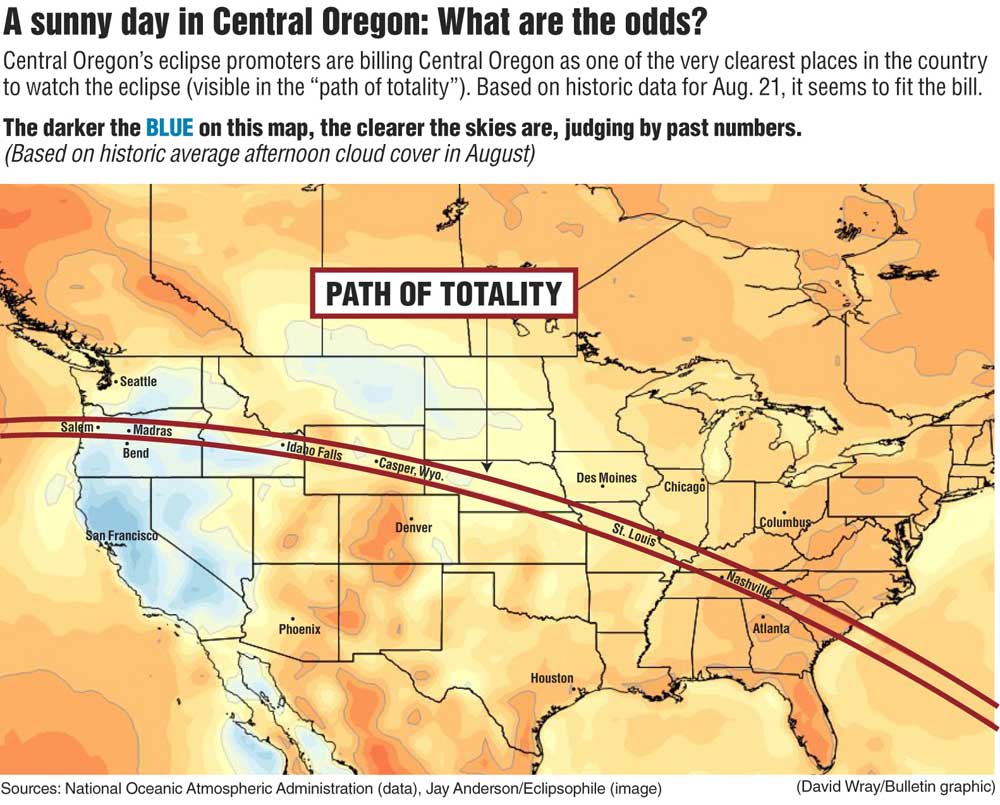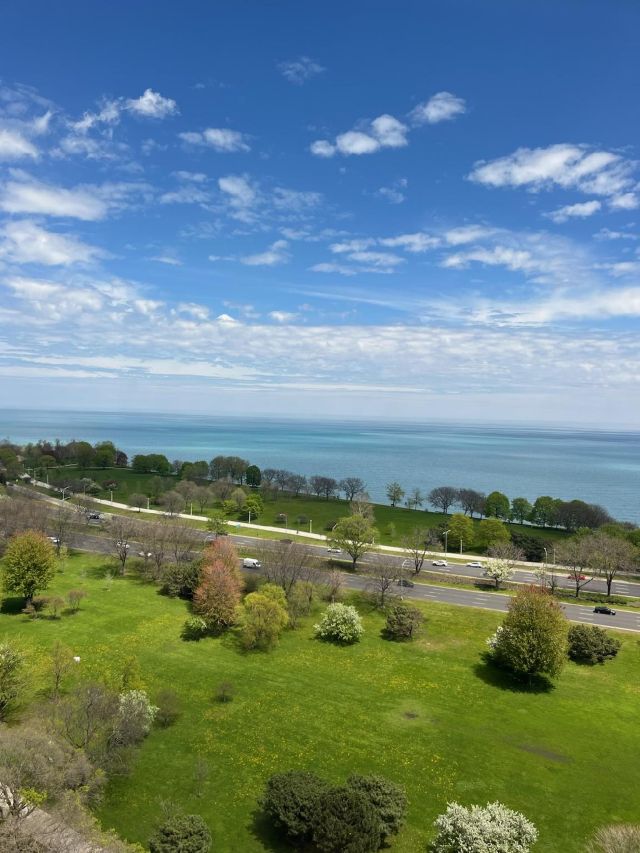Weather records say Madras really is ideal for eclipse
Published 10:55 am Tuesday, August 8, 2017

- Weather records say Madras really is ideal for eclipse
The promise of blue skies has lured visitors to Central Oregon during the summer for decades, and it’s a big reason why astronomers and city leaders believe Madras is one of the best places in the country to view the coast-to-coast solar eclipse on Aug. 21.
Madras is bracing for at least 114,000 people to be in town on the day of the eclipse, according to Lysa Vattimo, solar eclipse plan facilitator for the city of Madras.
While every community along the eclipse’s path of totality is expecting crowds, Vattimo said high elevations, scenic views and ubiquitous clear skies make the city particularly appealing.
“We have a better chance of good weather,” Vattimo said.
While it is too early for a reasonable weather prediction for late August, predictions and historical data suggest Madras may indeed be the best bet for visitors hoping for a sunny day.
However, the same weather patterns that bring blue skies to the area can cause wildfires, producing smoke that could obscure the celestial phenomenon.
August is one of Central Oregon’s driest months, with an average of just a third of an inch of rain falling in Madras during the month, according to data from the Western Regional Climate Center. Redmond, the nearest airport to Madras, averages 0.02 inches of rain on Aug. 21, according to Weather Underground, a website that predicts and tracks weather.
“It’s definitely a dry time of year,” said Jim Smith, observation program manager at the National Weather Service office in Pendleton.
While the La Niña weather pattern led to a wetter-than-normal winter and spring for Central Oregon, that trend isn’t expected to carry into summer. The Old Farmer’s Almanac for 2017, which provides long-range weather forecasts across the country, calls for a relatively normal August in the Intermountain West.
“Summer will be slightly hotter than normal, with near-normal rainfall,” the almanac reads.
Smith added that Madras has seen measurable rainfall 12 times on Aug. 21 since the service began collecting data in 1916, meaning that the city has gotten rainfall 12.5 percent of the time. Compare that to Salem, which is also near the center of the eclipse’s path of totality. Smith said Salem has received measurable rainfall on that date 18.6 percent of the time.
Other western destinations billed as clear places to view the eclipse don’t quite measure up as far as rainfall.
Casper, Wyoming, a town in central Wyoming identified by GreatAmericanEclipse.com on its list of “Ten great places to see the total solar eclipse,” has received more than a trace of rainfall 14 percent of the time on Aug. 21, according to Geri Swanson, meteorologist with the National Weather Service office in Riverton, Wyoming. Idaho Falls, Idaho, near the Snake River Valley, has received a trace or more of precipitation more than 39 percent of the time on that date, according to John Hinsberger, with the weather service’s office in Pocatello, Idaho.
Additionally, Vattimo said many spots east of the Mississippi River have to deal with summer humidity, which can lead to afternoon rain.
“A lot of states are prone to thunderstorms that time of year,” Vattimo said.
While afternoon showers happen from time to time in Central Oregon during the summer, they’re unlikely to affect the eclipse, which will be visible in Madras at around 10:20 a.m.
Cloud cover could turn the eclipse into a less dramatic spectacle but recent images from the National Oceanic and Atmospheric Administration, provided by the Crook County Sheriff’s Office, point to clear skies. Significant cloud cover over Madras at 10:15 a.m. on Aug. 21 has occurred just once in the past seven years.
The weather was one of the factors that appealed to Lowell Observatory, a nonprofit astronomy organization based in Flagstaff, Arizona, that will join with Madras High School to host several events, including a viewing party during the eclipse. Sonja Gonzalez, event coordinator for the observatory, said the organization looked at other locations in Oregon, but the possibility of clouds on the Oregon Coast and in the Willamette Valley steered them toward Madras.
“It was identified as the premier place to watch the eclipse,” Gonzalez said.
However, the upshot to Central Oregon’s warm, dry August weather is that it leaves the region susceptible to wildfires during that period.
Lauren Miller, a fire and fuels specialist for the Central Oregon Fire Management Service, said that an average of one fire over 300 acres has been active in Central or Eastern Oregon during the last two weeks of August during the last 10 summers, thanks to the season’s low humidity and high levels of recreation. There were three active fires on Aug. 21 in Central Oregon last year, according to The Bulletin’s archives.
“It’s a time when we see a lot of red-flag conditions,” Miller said.
However, the impact of a wildfire on eclipse views in Madras depends a lot on circumstance. Gonzalez said having a lot of smoke in the air would impact views of the phenomenon, but the effects would depend on whether wind blows smoke toward the city or away from it.
“It’s one of those things where we are crossing our fingers,” she said.
Vattimo added that wildfires could cause breathing problems, or force visitors staying on public lands to evacuate. For that reason, Vattimo said the city is trying to shepherd as many people as it can into dedicated RV and camping areas. On Thursday, she said there are still 10,000 spots on private campgrounds available in and around Madras, as well as daytime parking for RVs.
— Reporter: 541-617-7818, shamway@bendbulletin.com






